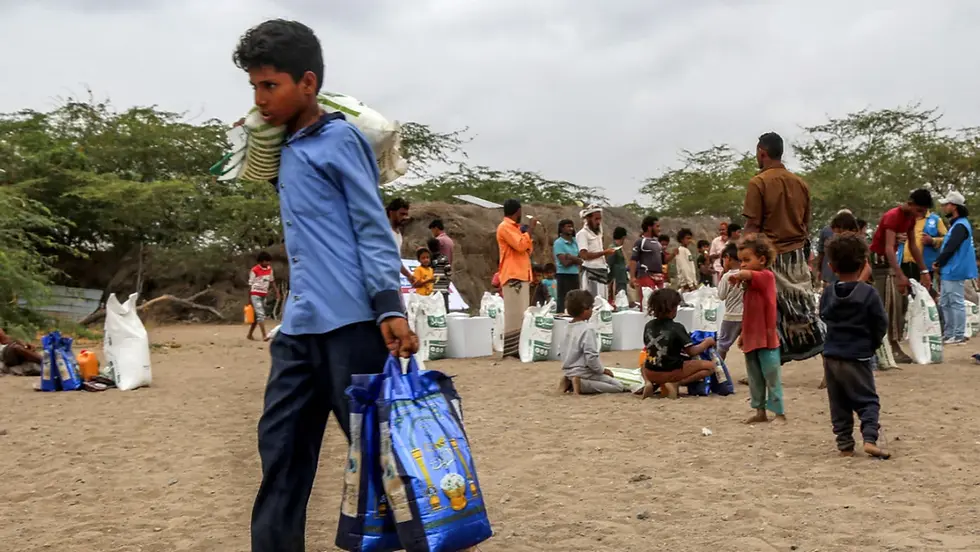When does an urgent food crisis become a famine?
- ITV News
- Mar 7, 2017
- 3 min read

Nine-month-old Ali Hassan is among a generation of Somalian babies facing a looming famine. Credit: AP
An unprecedented four nations could be declared as fighting famine in food-rich 2017, with an estimated 20 million people and 1.4 million children rated at imminent risk of death.
While food security crises, predominantly in Africa, are sadly common, the declaration of famine is a rare and sparing classification.
So what is required to declare a famine, what has caused the current desperation and what action has been called for to save millions from starvation?

The UN waited to measure death, malnutrition and hunger before declaring famine in South Sudan. Credit: AP
The term famine is officially used sparingly and, bluntly, only once people have already started dying of hunger.
The UN will only declare a famine the following three measures of death, malnutrition and hunger must be met:
At least 20% of households in an area face extreme food shortages (less than 2,100 calories a day) and a limited ability to cope.
More than 30% of the population is acutely malnourished.
At least two people for every 10,000 die each day

South Sudanese women wait for food after a famine is declared in the east African nation. Credit: AP
Northern Nigeria, Somalia and the Middle Eastern nation of Yemen are rated at risk but famine has already been declared in parts of South Sudan.
At least 100,000 people in Unity state are battling famine, along with one million more on the brink of it, the UN confirmed last month.
Prior to South Sudan, famine was last declared in July 2011 in Somalia.
The UN estimates around 4.9 million people are currently in need of urgent food, agriculture and nutrition assistance in South Sudan, along with millions more in the other at risk nations.
4.9m - The estimated number of people in South Sudan facing severe food insecurity.
2.9m - The estimated number of people in Somalia facing severe food insecurity.
1.8m - The estimated number of people in Nigeria's conflict-hit north facing severe food insecurity.
14.1m - The estimated number of people in Yemen facing severe food insecurity.
What has raised the threat of famine?

Millions of invaluable livestock have perished as Somaliland battles a devastating drought. Credit: ITV News
Conflicts, drought and economic crises are the most common causes while efforts to bring aid are, according to the UN, woefully underfunded.
South Sudan has been embattled in a three-year civil war before its entrenched financial woes were compounded by months of drought that has hit their fellow east Africans in Somalia.
Fighting has totally undermined efforts to fight natural problems in north-east Nigeria, Somalia and Yemen.
The conflicts force people to flee, disrupt agriculture, make regular trading near-impossible and thwart aid responders.
The situation is too dangerous in Nigeria for aid workers to confirm suspected famines in two towns in the northern region where the military is battling Boko Haram insurgents.
Yemen's famine threat has also risen because of water shortages.
What action is being done in response?

Bags of food have been dropped by the World Food Program in South Sudan. Credit: AP
In the short term, the battle to fight the spread of famine is one of funding and access.
Secretary General António Guterres of the United Nations said the UN needs around £3.6 billion by the end of March to prevent the catastrophe of hunger and famine in South Sudan, Nigeria, Somalia and Yemen.
Immediate humanitarian assistance is needed to bring aid, but that has been woefully hindered by conflict.
In the longer term, the ending of fighting will vastly boost efforts to support those facing starvation.
How widespread is Africa's food problems?


The map shows the grading of food insecurity across crisis-hit Africa. Credit: Africa Center For Strategic Studies
The persistent lack of rainfall across the Horn of Africa at the end of last year has left an estimated 12 million people in dire need of food assistance.
The UN's Food and Agriculture Organisation (FAO) said the plight of families in Ethiopia, Kenya and Somalia was exacerbated by rising debt, poor harvests, low milk and meat production that, combined, meant limited access to food and income.
But that is only a small section of the continent's food woes.
The Africa Center for Strategic Studies, which is based in the US, said 19 African countries are facing crisis, emergency, or catastrophic levels of food insecurity.
Ten of those countries are experiencing civil conflict.
______________________________________________________________________________________________________________________________________
(c) 2017 ITV News






